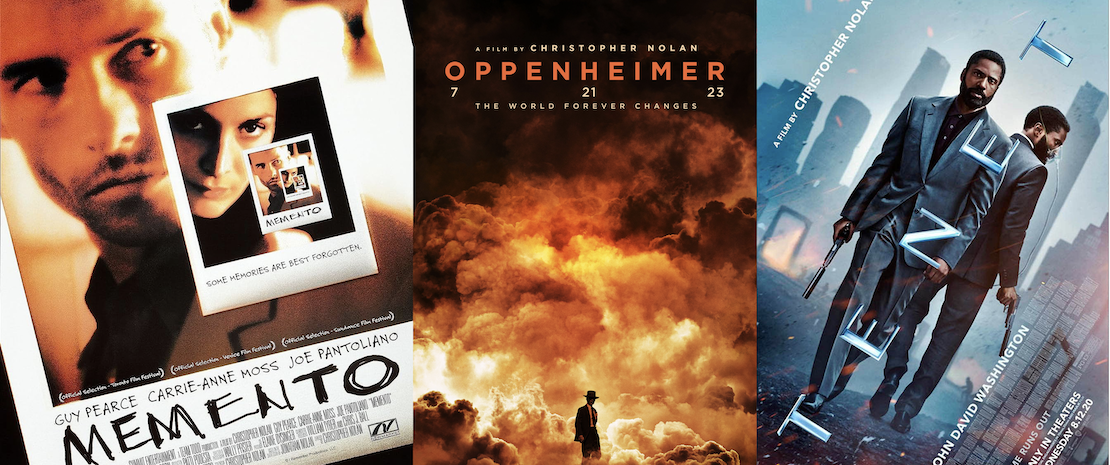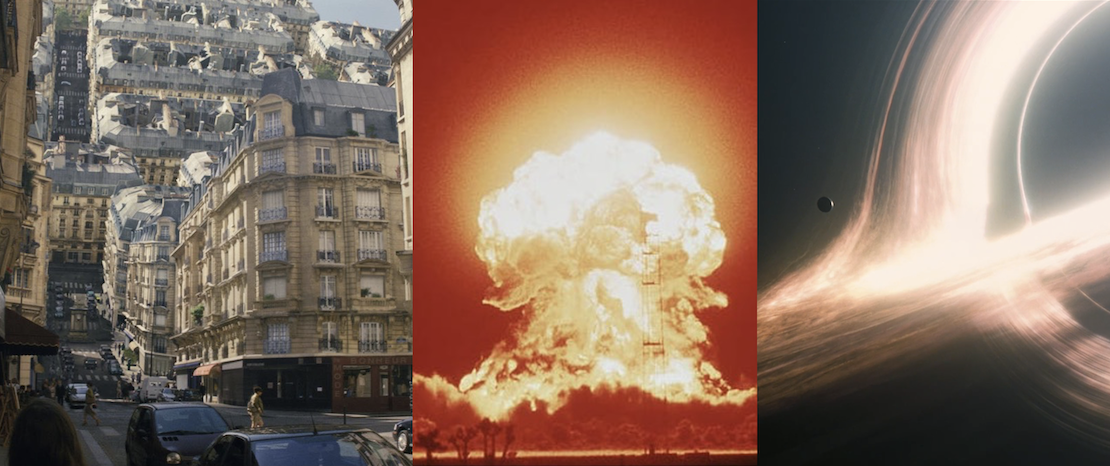


By Riddhesh Sadariwala, Abhinav Chandekar
Christopher Nolan’s latest directorial venture Oppenheimer grossed ₹58 Cr in its first weekend in India, comfortably surpassing expectations. As on Sunday, August 13, the film has grossed ₹147 Cr at the India box office, and is expected to close its lifetime run at about ₹155 Cr. In comparison, Tenet and Dunkirk, his two previous films, grossed ₹11 Cr and ₹26 Cr over their lifetime in India. Even if one factor for Tenet’s box office being impacted by the pandemic, Oppenheimer’s box office is more than five times these films. Incredibly, it is higher than the lifetime box office of Mission Impossible - Dead Reckoning: Part One, which released a week before Oppenheimer. India is one of the few countries where Oppenheimer has outperformed Barbie.
Oppenheimer’s success in India is particularly impressive, because the film does not have any of the favourable factors that are known to make Hollywood films work at the India box office: action/superhero/sci-fi/horror genre, franchise, 3D, multi-language release (the film did not have Tamil and Telugu versions like most Hollywood films, and the Hindi version ran only in select theatres), etc.
With a contemplative premise, minimal scope of action, and evolved themes, the only “saleable” factor in Oppenheimer in India is the equity of its director, Christopher Nolan. When it comes to the popularity of Hollywood directors in India, James Cameron and Christopher Nolan take the top 2 spots, well ahead of all other directors. Nolan’s equity is also the most youth-skewed compared to other directors, indicating the nascent and possible growing nature of the audience cohort that appreciates and admires his filmmaking.
How did Christopher Nolan manage to build such a sizeable fan base in India? What elements of his storytelling and filmmaking style find resonance in India, a market where the syntax of mainstream theatrical content are so diametrically different from his signature? What are the possible benefits that his films provide to the Indian audience, that make them differentiated and highly admired?
Cerebral stimulation
Known for weaving intricate and mind-bending narratives, Nolan's films offer audiences a unique and intellectually-stimulating experience, a defining and differentiated benefit that watching his films provides. For Indian theatrical audiences, experiencing Nolan's films presents a differentiated and exhilarating cinematic journey that sets them apart from local offerings. The common elements that enable his films to provide cerebral stimulation to the audience are:
Non-linear storytelling: Nolan manipulates time with finesse, creating intricate puzzle-like narratives that unfold in layers. This deliberate fragmentation of the storyline demands active participation from the audience. As viewers connect the dots and unravel the plot’s mysteries, they become emotionally invested in the characters and their journeys, but more importantly are cerebrally stimulated, and have a sense of heightened engagement with the narrative. The non-linear narrative structure enriches the cinematic experience, making each revelation more rewarding and thought-provoking, keeping audiences thoroughly hooked to the story. From Memento to Oppenheimer, many of his films have thrived on a non-linear and complicated narrative, enhancing the viewing experience. He also alternates between a monochromatic color scheme and a normal color palate, between various timelines, with the use of each color scheme having a symbolic meaning, which plays subliminally on the audiences mind.

For the Indian audience, who have been brought up on linear, simplistic narratives, Nolan’s films offer a variety that’s hard to miss: intelligent cinema in a commercial format.
Abstract and science-based themes: Nolan often explores abstract and science-based themes that delve into the realms of dreams (Inception), time (Tenet), memory (Memento), and human consciousness and psyche (Oppenheimer, among others). These themes serve as a catalyst for intellectual engagement, pushing audiences to ponder the boundaries of reality and the human mind. Films like Inception explore the idea of dreams within dreams, while Interstellar delves into the theoretical concepts of black holes and interstellar travel. While these films are filled with exposition that explains the various scientific concepts or the rules of the world in a simple manner to the audience, Nolan is careful to never make these explanations overly simplistic and straightforward, always keeping the audience second-guessing and attentive.
Fast-paced narrative style: Films like Oppenheimer earn their 2.5+ hours duration because of Nolan’s fast-paced editing style, where significant movement in the story is achieved in an economical manner. Christopher Nolan's filmmaking is renowned for its ability to keep audiences on the edge of their seats through busy narratives that seamlessly weave intricate plots. One such example is found in his film, The Dark Knight, where Nolan maintains an intense tempo as he introduces the Joker's chaotic presence, setting off a series of events that lead to moral dilemmas and gripping confrontations. This swift narrative momentum is heightened in Dunkirk, where Nolan ingeniously interlaces three distinct timelines of land, sea, and air, effectively intensifying the urgency and suspense of the World War II evacuation. Nolan's masterful command of pacing ensures that his audiences are not just passive viewers but active participants, racing alongside his characters as they navigate the complexities of his meticulously crafted worlds.
An Indian audience that seeks escapist content from the local content offerings, looks for variety and novelty when consuming International content. Nolan’s films manage to provide this distinct variety, an aspect that is almost synonymous with his brand, of providing intellectually rich and stimulating content to the audience, an aspect that no other local creator manages, or even aims to provide. Watching and claiming to understand a Nolan film, is a way of building social capital regarding your intelligence among ones peer group, with his films also providing a social function of projection for the viewers of his films. To claim to fully understand and have the ability to explain the intricacies of Tenet or Inception, or explain the complicated science presented in Interstellar and Oppenheimer, is a way of signalling one’s own intelligence… an aspiring idea for urban Indian youth.
Awe-inspiring visuals and spectacles
In addition to cerebral stimulation, another primary and defining aspect of Nolan’s films for the Indian audience is the awe-inspiring visuals and spectacles. In Inception, the breathtaking scene where Paris folds onto itself is a prime example. The cityscape bending and contorting defies gravity and mesmerizes the audience, blurring the line between reality and dreams. Interstellar continues this trend with its depiction of a black hole (Gargantua) and its gravitational effects on time and space. The visual representation of the event horizon and the warping of light around the black hole is a testament to Nolan's commitment to scientific accuracy and cinematic grandeur. Equally remarkable is the aerial dogfight in Dunkirk, as Spitfires engage in intense combat amid the expansive sky and the vastness of the sea, amplifying the film's tension and scale. In Oppenheimer, the Trinity test sequence visually depicts the possible devastating nature of an atomic bomb, with the slow but emphatic formation of the ill-famed mushroom clouds, causing an effect in the audience that goes beyond the visual.

Nolan's skill in creating visuals that both astonish and serve the narrative is evident in each frame, making his films not just a visual treat but a transformative cinematic experience.
Authentic and engaging atmospherics
Another striking feature of Nolan’s work is the mood-setting through his meticulously attempt at building the right atmosphere for each film, through the use of evocative musical scores, enhancing the overall cinematic experience. The combination of exceptional visuals and haunting music reinforces the cerebral impact of the narrative, evoking strong emotional responses from the audience. The collaborations with a host of talented composers from Hans Zimmer to Ludwig Goransson, that create music that underscores the themes presented in the scenes, and the films at large, create an immersive experience for the audience, making the viewing experience more compelling.
Rooting character motives in universal motivation and emotions
Amidst all the complicated world-building, abstract ideas and concepts, and stunning visuals, Nolan’s films always situate the conflict in the story among character motivations that are universal and relatable, providing a robust bulwark of deep emotion and motivation, over which the intricate tapestry of complicated storytelling can be built upon. For example, the core of Memento’s story is the guilt and inability of a man to process the loss of his love, and his pursuit to avenge the death of his loved one. This is also present in themes of parenthood explored in Interstellar and Inception. In Interstellar, the protagonist does everything to make life better for his daughter, and in the end reunites with her decades later, traveling around the edge of the fabric of the universe for the love of his daughter. In Inception, the protagonist in the film chooses to ignore whether he is dreaming or in the real world only because he is with his family, and gets to spend time with his love ones. In Oppenheimer, the guilt that Oppenheimer feels at creating an object that allows humanity to destroy itself, is at the core of the story, making the guilt of the character a palpable emotion through the course of this film. All of the above are examples of how, despite choosing imaginative concepts, Nolan’s situates the drama in the story, in common human motivation and emotion, making the viewing of his films an evocative experience.
Christopher Nolan's signature filmmaking style is a testament to his mastery as a filmmaker. Indian cinema predominantly emphasizes emotions, drama, and musical elements, often catering to a wide range of audience preferences. In contrast, Christopher Nolan's films offer a departure from this norm, presenting an awe-inspiring experience that transcends cultural and language barriers. In the age of streaming, Indian audiences are now exposed to such experiences in the best American TV series. When seen on the big screen, this impact multiplies. Oppenheimer is the first Nolan film to release post the rise of streaming in India in the 2020-22 period. His fan base has expanded, with more exposure to his earlier work during these years, aided by the growth of English content audience in India during the pandemic.
It's time to relook at the notion that Hollywood’s success in India is limited to specific genres and franchises. Or perhaps, stick to that notion, but add “Christopher Nolan films” as a genre of its own, to that list!

Ormax Cinematix's FBO: Accuracy update (October 2025)
This edition of our monthly blog summarises Ormax Cinematix's box office forecasts (FBO) for all major October 2025 releases vis-à-vis their actual box-office openings

The India Box Office Report: September 2025
Led by They Call Him OG and Jolly LLB 3, September 2025 emerges as another good month at the India Box Office, with gross collections of ₹1,035 Cr

The ₹100 Cr moment for Gujarati cinema
With a quarter still to go in 2025, Gujarati box office has surpassed the ₹100 Cr mark for the first time ever. Here's a deep-dive into a success story that very few saw coming
Subscribe to stay updated with our latest insights
We use cookies to improve your experience on this site. To find out more, read our Privacy Policy